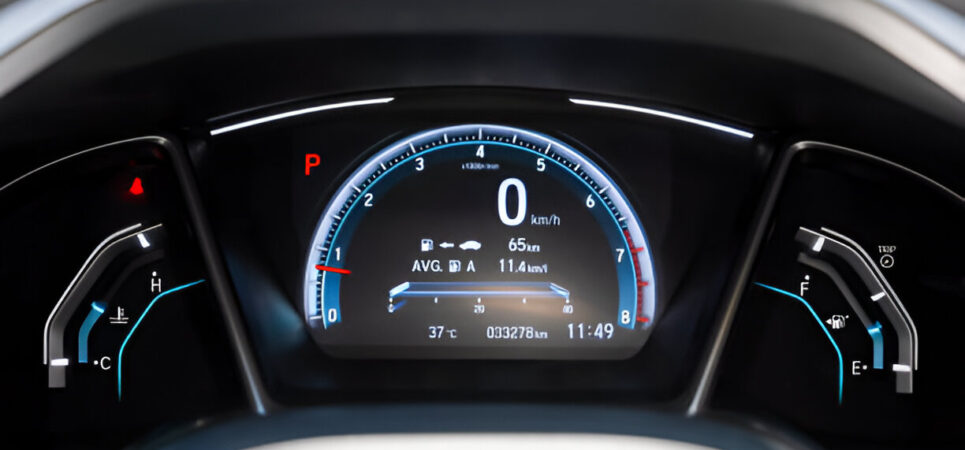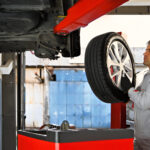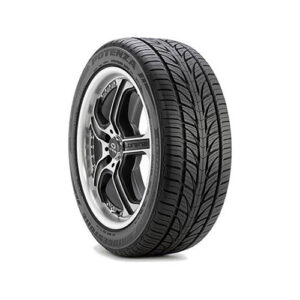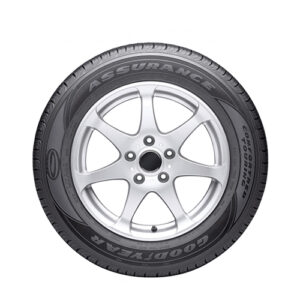Driving with underinflated or flat tyres is dangerous. It reduces control of your vehicle and puts everyone on the road at risk. This is why having a Tire Pressure Monitoring System (TPMS) is so important. But what do you do when the service tyre monitor system light comes on? Here’s a simple guide to help you fix it.
Check Tyre Pressure
First, check the tyre pressure with a gauge. Most cars have a sticker inside the driver’s door with the recommended pressure. Inflate the tyres to the proper level if they are low. You can find the recommended pressure on the inside of the driver’s door, in the owner’s manual, or sometimes even on the tyre itself. Make sure to check all four tyres, as the problem might not be with just one tyre. If the light goes off, the problem is solved. If not, move to the next step.
Inspect the Tyres
Look at the tyres for any visible damage. Check the valve stems for leaks. You can do this by putting a bit of soapy water on the valve. If you see bubbles, there’s a leak. If you find damage, replace the tyre or valve stem. Besides leaks, check for other issues such as punctures or cracks. Sometimes small punctures can be hard to spot, so take your time. Also, examine the tyre tread for uneven wear, which might indicate other underlying issues.
Reset the TPMS
Sometimes, the TPMS needs resetting. Here’s how you can do it:
- Turn On the Ignition: Do not start the engine. Just turn the key to the ‘on’ position. This position allows the electrical systems to be powered up without starting the car.
- Press the Reset Button: This is usually located under the steering wheel. Hold it until the TPMS light blinks three times. The exact location of the reset button can vary depending on the car model, so consult your owner’s manual if you can’t find it.
- Start the Car: Drive for about 20 minutes to let the sensors reset. Make sure to drive at a steady speed, preferably on a clear road, to allow the system to recalibrate accurately.
If the light stays on, you may need professional help. Persistent issues might indicate a more serious problem with the TPMS itself or with the car’s electrical system.
How To Use Tire Pressure Guage ?
Why Resetting the TPMS is Important
Resetting the TPMS is important because it ensures the system is working correctly. A faulty TPMS can give false readings, which can be dangerous. False readings can lead to improper tyre maintenance, which in turn can cause tyre failure. Resetting it regularly keeps it accurate. An accurate TPMS helps maintain optimal tyre pressure, which improves fuel efficiency, enhances tyre life, and ensures better vehicle handling.
Seek Professional Help
If you’ve tried all the steps and the light is still on, it’s time to see a mechanic. They have special tools to diagnose and fix TPMS issues. Professional diagnostics can pinpoint problems that might not be apparent during a visual inspection. Don’t ignore the light, as driving with underinflated tyres is dangerous. Persistent TPMS warnings could mean a problem with the sensors or the car’s onboard computer.
Who Buys Used Car Tires?
Tips for Maintaining Your TPMS
Keeping your TPMS in good shape is crucial. Here are some tips:
- Regular Checks: Check your tyre pressure at least once a month. Regular checks help catch slow leaks before they become major problems.
- Service: Have your TPMS checked during routine vehicle maintenance. A professional can ensure the sensors and the system are functioning correctly.
- Replace Batteries: The sensors in a direct TPMS have batteries. They last about 5-10 years. Replace them when needed. Sensor batteries dying out is a common issue, especially in older vehicles.
Common TPMS Myths
There are some myths about TPMS. Let’s clear them up:
- Myth 1: You Don’t Need To Check Tyres If You Have TPMS: False. TPMS helps, but it’s still important to check tyre pressure regularly. TPMS is an aid, not a substitute for regular maintenance.
- Myth 2: TPMS Sensors Are Very Expensive: Not always. The cost depends on your car and the type of sensor. Many aftermarket sensors are available at reasonable prices.
- Myth 3: You Can Ignore the TPMS Light: Never ignore the light. It’s there to keep you safe. Ignoring it can lead to tyre failure and increase the risk of accidents.
Conclusion
Fixing the service tyre monitor system is straightforward. Start by checking the tyre pressure and inspecting for damage. Reset the TPMS if needed. Regular maintenance keeps your TPMS in good shape. If the light stays on, see a mechanic. Safety first!
Driving with proper tyre pressure ensures a safe and smooth ride. Always pay attention to your TPMS light and take action when needed. With these steps, you can keep your tyres in top shape and stay safe on the road.
For more Tire Services Contact us Today!
Contact Zee’s New and Used Tires
At Zee’s New and Used Tires, we’re here to help you with all your tyre needs. If your TPMS light is on and you’re not sure what to do, come visit us. Our expert mechanics will inspect your tyres, fix any issues, and reset your TPMS. Don’t take risks with your safety. Visit Zee’s New and Used Tires today for professional, reliable service. Your safety is our top priority!
Frequently Asked Questions
Why is my TPMS light on?
The TPMS light can come on due to low tyre pressure, damaged tyres, or sensor issues. Check your tyre pressure first. If it’s correct, inspect for damage or consider resetting the system.
How do I check tyre pressure?
Use a tyre pressure gauge to measure each tyre’s pressure. Compare the reading to the recommended pressure found on the sticker inside the driver’s door. Inflate tyres as needed to match the recommended levels.
Can I reset the TPMS myself?
Yes, you can reset the TPMS by turning on the ignition (without starting the engine) and pressing the reset button, usually located under the steering wheel. Drive for about 20 minutes to complete the reset.
How often should I check my tyre pressure?
Check your tyre pressure at least once a month and before long trips. Regular checks help prevent issues like under-inflation and ensure your tyres are in good condition.
What should I do if the TPMS light stays on?
If the light remains on after checking tyre pressure and resetting the system, consult a mechanic. Persistent issues may indicate a malfunctioning sensor or a more serious problem with your vehicle.
Are TPMS sensors expensive to replace?
The cost of replacing TPMS sensors varies by vehicle and sensor type. Generally, sensors are affordable, but prices can differ. Check with a local mechanic or tyre shop for a precise quote.








Leave a Reply